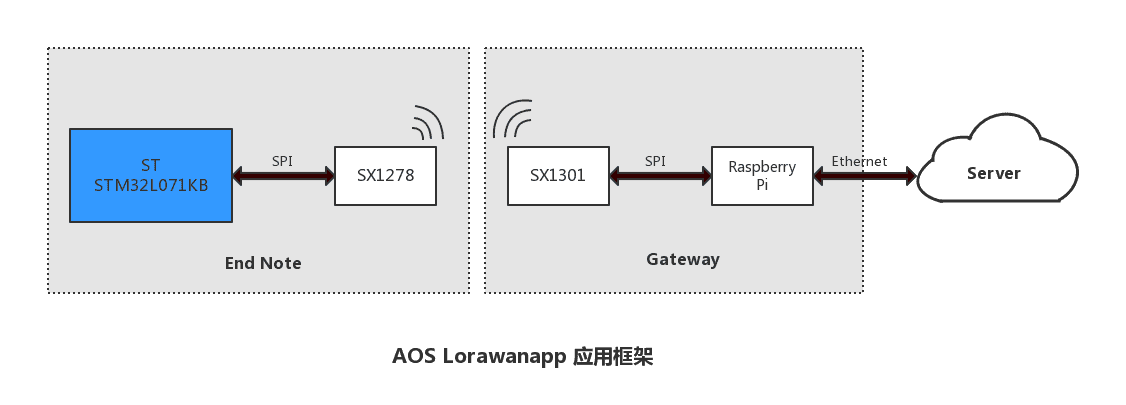-
Notifications
You must be signed in to change notification settings - Fork 1.1k
AliOS Things lorawanapp
EN | 中文
AliOS Things is a light-weight embedded operating system for Internet of Things (IoT). This article will give you an example of Lorawanapp, and the network construction and data transfer in LoRaWAN, giving you a general knowledge of AliOS Things.
- Since AliOS Things can fully support Lorawan, users can achieve the lowest application power consumption by setting Class A
- increase AliOS Things's support for kernels
- (Optional) support for multi bin: Hardware resources are very limited. Characterized as multi bin, code in application side can be upgraded separately, improving upgrade efficiency and greatly reducing power consumption.
- (optional) support for KV: Increase use security and service life of Flash and improve the security of application data
- (optional) support for CLI: increase command interfaces, making code debugging easier and improving development efficiency
- the above optional features need to be configured according to actual hardware resources
Optional multi bin feature support: the actual hardware resources are very limited. Through multi bin features, it can upgrade the application code separately, provide upgrading efficiency and greatly reduce the power consumption of upgrading.
-
optional KV feature support: increase user Flash's use security and service life, improve the security of application data
-
optional CLI feature support: increase command interface, code debugging and improve development efficiency
-
the above optional features need to be adapted to the actual hardware resources
Optional multi bin feature support: the actual hardware resources are very limited. Through multi bin features, it can upgrade the application code separately, provide upgrading efficiency and greatly reduce the power consumption of upgrading.
-
optional KV feature support: increase user Flash's use security and service life, improve the security of application data
-
optional CLI feature support: increase command interface, code debugging and improve development efficiency
-
the above optional features need to be adapted to the actual hardware resources
Optional multi bin feature support: the actual hardware resources are very limited. Through multi bin features, it can upgrade the application code separately, provide upgrading efficiency and greatly reduce the power consumption of upgrading.
-
optional KV feature support: increase user Flash's use security and service life, improve the security of application data
-
optional CLI feature support: increase command interface, code debugging and improve development efficiency
-
the above optional features need to be adapted to the actual hardware resources
| Compiler | Flash(KB) | RAM(KB) | Optimization Level |
|---|---|---|---|
| gcc | 61.26 | 6.67 | -Os |
| iccarm(IAR) | 43.83 | 6.18 | -O3 |
| armcc(Keil) | 42.64 | 6.20 | -O3 |
*There are floating point operations in the LoRaWAN stack, but most MCU does not contain that capability, so software implementation is needed, and different compiler will generate different code.
This article introduces a LoRaWAN example in AliOS Things. There maybe omissions or mistakes, and not perfect in details such as API and function package. The main purpose is to give you a general idea of usage of AliOS Things and LoRaWAN. Hope you can experience the convenience of AliOS Things and achieve the deployment and testing of LoRaWAN based on it.
| Home | Tutorial | Hardware | Porting Guide | Utilities | API Reference | Technical Docs | Certification |
Crafted with ❤️ by AliOS Things Team.
- Quick Start
- Hello World
- Starter Kit Tutorial
- Developer Kit Tutorial
- AliOS Studio Tutorial
- Add a New Board Example
- Add a New Component Example
- Environment Setup
- SIG BLE Mesh Setup Guide
- BLE Tutorial
- LoRaWAN Tutorial
- Linkkit Tutorial
- LinkVoice Tutorial
- Hardware Setup
- WiFi Provisioning and Alink Certification
- Step by Step: MQTT to Cloud with STM32
- Video Tutorial
